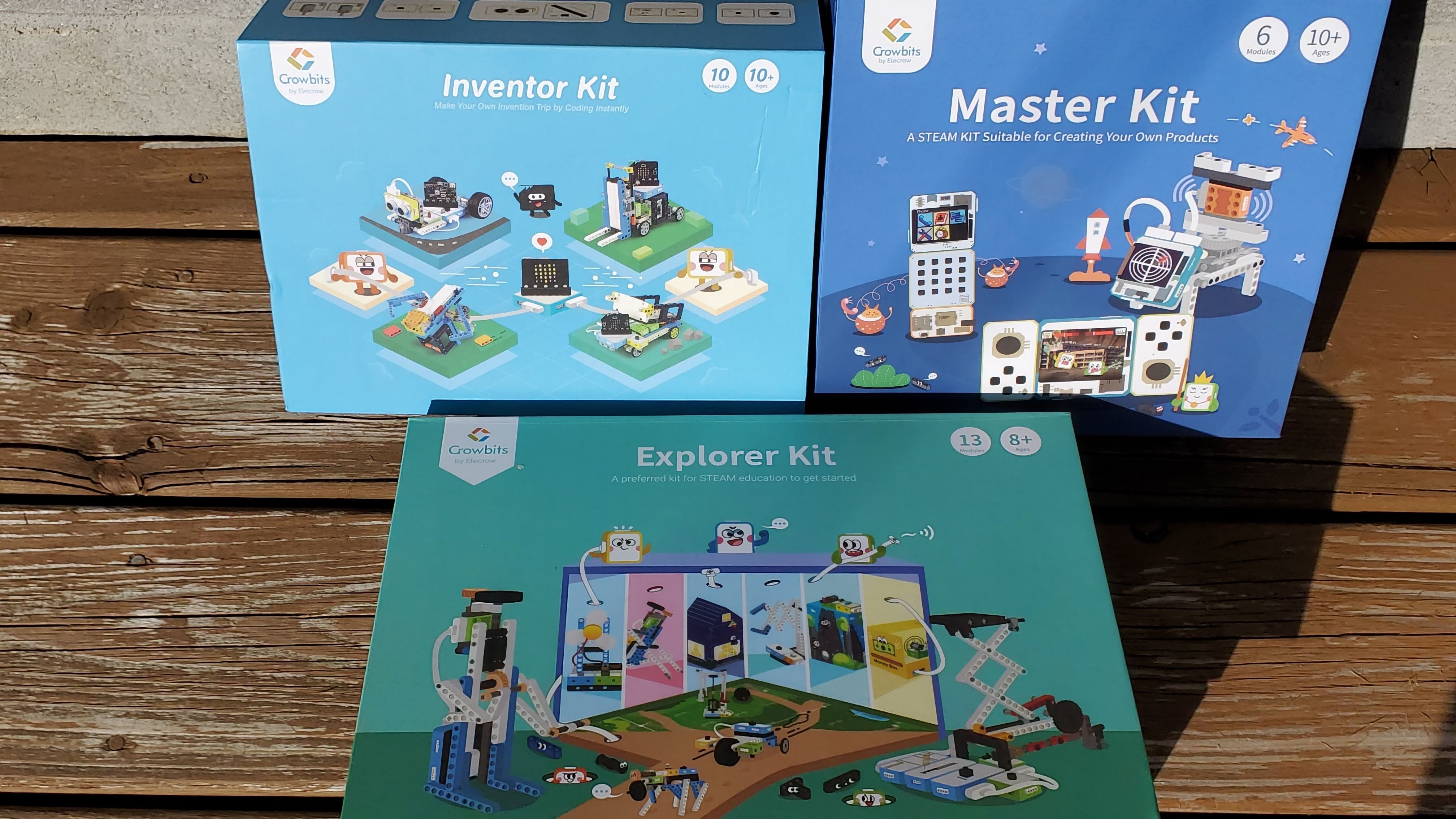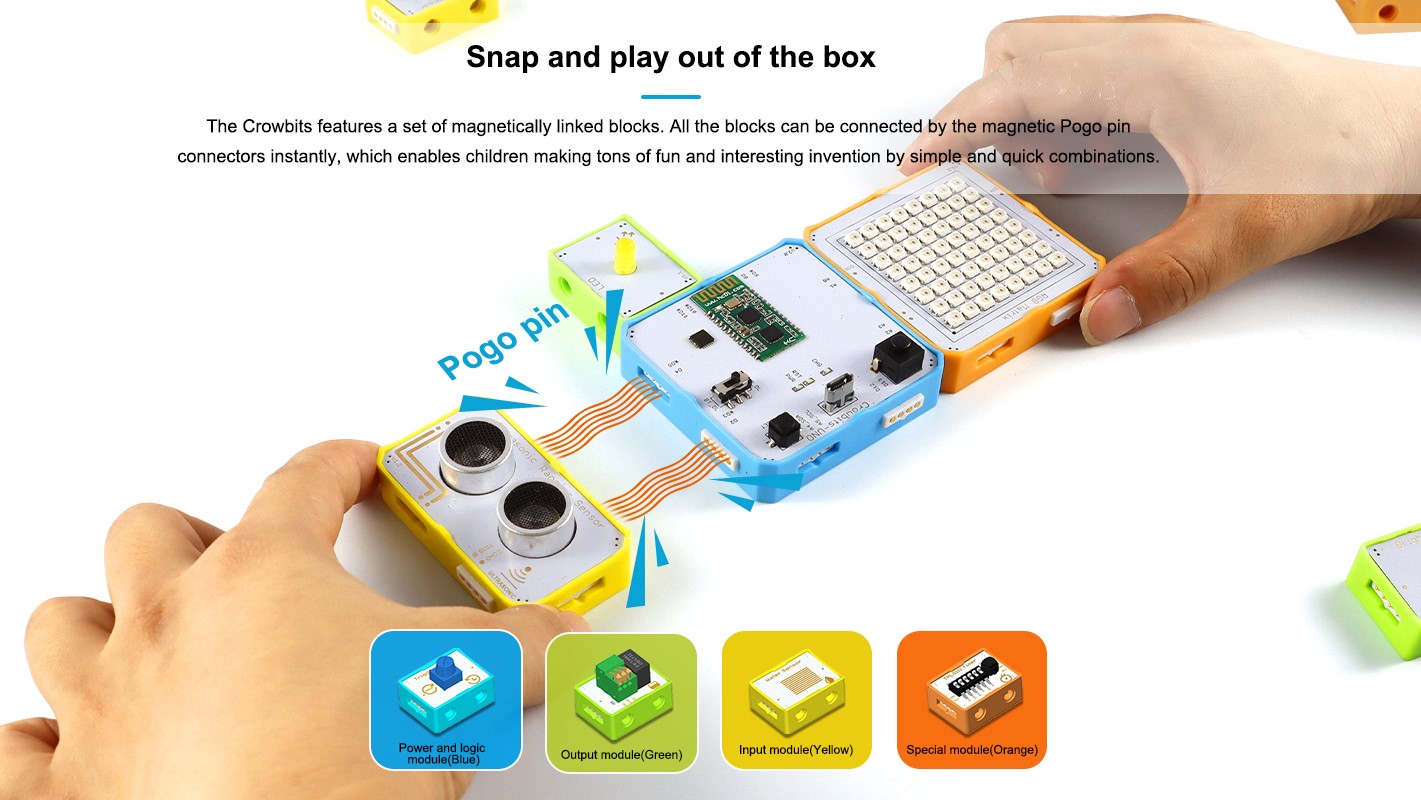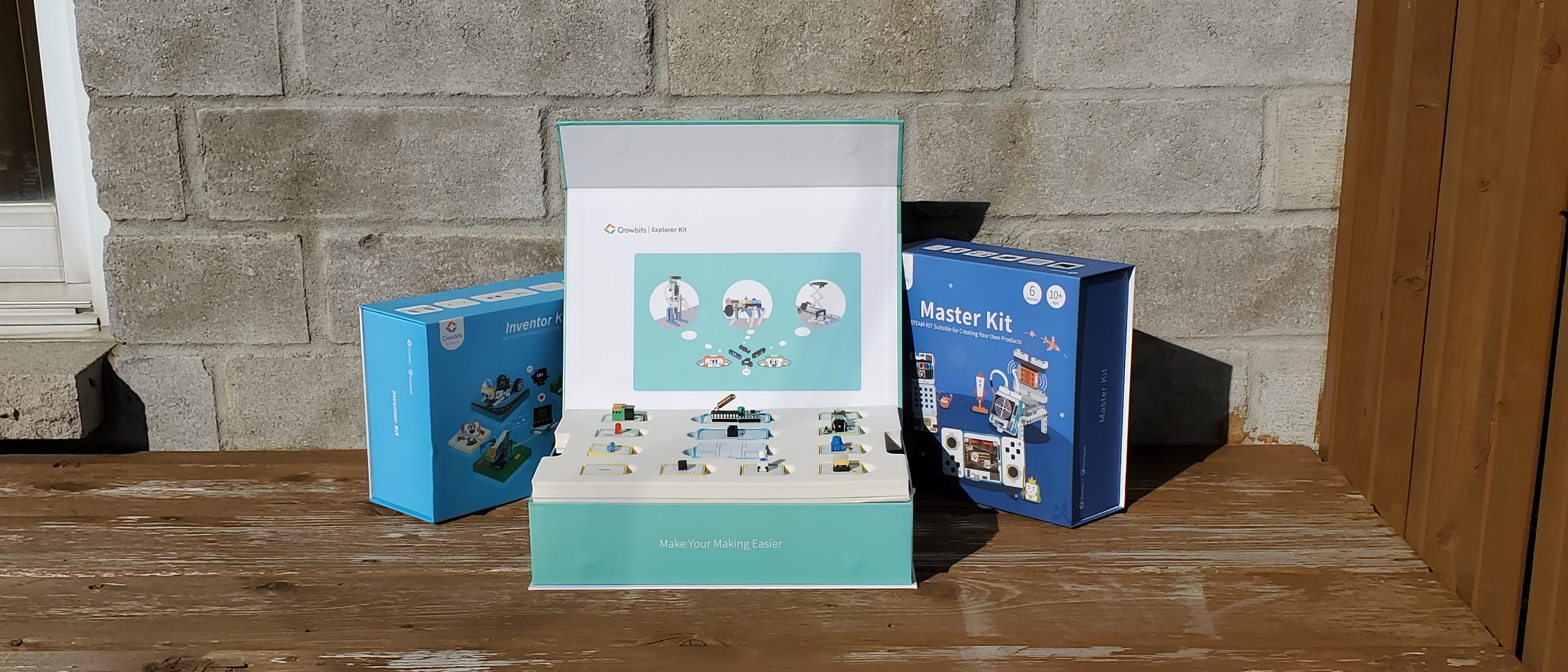TechRadar Verdict
Elecrow has done an excellent job developing electronic kits that are easy to assemble and compatible with the Lego system. They are affordable and make a great introduction to the wonderful world of electronics.
Pros
- +
Wide variety of modules
- +
Many interesting projects
- +
No-programming kits
- +
Well documented
- +
Elecrow forum
Cons
- -
Limited technical material
- -
No sale of individual modules
Why you can trust TechRadar
There have been many attempts to increase the level of interest in science and technology in children. Toys such as Lego provide a platform to build projects easily but are usually designed to be universal. Elecrow tries to solve this problem differently by focusing on the electronic aspect. Enter the Crowbits kits. They come as five boxes full of experiments requiring no soldering and range from a simple light sensor to more advanced kits such as a game console.
Experiments are built using Lego compatible modular blocks. These have a four-pin magnetic connector that easily snaps to other modules. To make the experiments more interactive, some sets include a small processor board that can be programmed using the Scratch-based Letscode environment.
- Also check out our roundup of the best Lego sets

Pricing and availability
The supplied examples are well thought out and provide a simple way to jump into programming and electronics. The kits include everything to start experimenting and are priced reasonably with the most affordable one at $39.90 while the most expensive costs $149.90. Elecrow is currently running an Indiegogo campaign with up to 41% discount available on some perks.

Design
The kit comes in a box with a magnetic cover that opens simply by lifting it. Inside, the Crowbits modules are revealed to be secured to a white foam. Most are rectangular in shape and being color-coded helps to quickly identify the type of module available; The mainboard and power blocks are blue in color. Input modules are yellow while outputs are green. Finally, communication and sensor blocks are orange.
Other accessories needed to complete various experiments are also included in the box. The Inventor kit allows the creation of different types of vehicles. Lego-like parts for these are supplied together with extension cables, a manual describing each experiment and various decals to be placed on the assemblies. As the experiment’s core, the mainboard of the Inverter kit contains a socket for a Microbit computer module. A lithium-ion battery and charger are also built in.

Connection between modules is simply done by bringing two modules together. These securely snap thanks to embedded magnets while four Pogo pins provide the electrical connectivity between blocks. The Crowbits design allows modules to be cascaded by passing power and control signals through the Pogo pins.

What makes the Crowbits ecosystem special is the large number of modules available. With over 80 components ready to be integrated in various settings, clear labels outlining their functionality are placed on the front and make them simple to use. The internal electric connection is also shown for some modules. The user can thus guess the final circuit, hence reducing the amount of time spent on troubleshooting an experiment. All these features, albeit small, make building projects a breeze and help foster an interest in electronics.
Sign up to the TechRadar Pro newsletter to get all the top news, opinion, features and guidance your business needs to succeed!

In Use
The Crowbits Explorer kit offers 13 distinct modules that can be used without any programming. Simple action/reaction projects are created by stringing modules together. Power is distributed from the battery module to all attached devices using the magnetic connector while sensors and actuators are written and read from the same interface.
A rule exists for module arrangement where an input module can only drive one or more output modules. Hence, two input blocks cannot be connected one after the other. Combinations of alternating inputs and outputs are also allowed (input, output, input and so on).
The Explorer kit allows creation of games such as Minesweeping War that introduces the concept of magnetism or a Non-contact Control Car which is based on an Infra-Red sensor. The power supply block is always used by the various projects and can be connected to other control blocks such as the wireless controller or directly to an input block. An output block connected to the power supply will not work since an input block is required to drive it.

The most interesting kit of the lot is the Master kit which boasts the ability to create a portable color game console, a 2G cell-phone and a laser radar. Even though these projects sound complicated, it really takes just a few minutes to assemble one kit. Things like the LCD screen, the joystick or the 2G radio have been conveniently placed and tested on Lego compatible blocks. This abstraction makes building complex stuff as simple as connecting two modules together. The only time consuming part should be the programming but thanks to the well illustrated user manual, this is also a breeze.
All programming is done using the Letscode GUI. This Windows application allows graphical elements representing programming blocks to be placed on a canvas. Complex operations such as drawing on the LCD become straightforward thanks to the rich library of graphical elements that have been tested with the Crowbits. Elecrow regularly updates the version of Letscode and a forum addressing Crowbits issues is maintained on their website.
The Crowbits kits lack any form of schematic or specification about the different modules. For example, it is impossible to know the autonomy of the battery pack from the manual. That said, we need to keep in mind that these are designed more as an introduction to electronic components than actual parts that might be used in professional projects.
The competition
The Crowbits series fills a niche of products geared towards kids of all ages. The innovation being the magnetic connector and compatibility with Lego system, there are very few things that come close to it.
Lego Mindstorm is a construction set that includes electronic parts but with some kits approaching 900 pieces, it is far more complex than the Crowbits. The higher price tag also put a damper on how accessible this kit is.
LittleBits from Sphero is based on the same connector technology as the Crowbits and while offering more module types, it comes with a MSRP of $64.99 for the most basic kit. It also lacks the ability to become part of the Lego ecosystem, something that the Crowbits does seamlessly.
There are many other kits available online but are usually specific to only one project. For example, numerous smart robot car kits are available on Amazon but they are again more complicated to assemble while the amount of electronics can be overwhelming. Here, the Crowbits rules for its simplicity as well as having more experiments.
Final verdict
Elecrow reinvents the electronic experiment kits with the Crowbits by having a solderless platform that is also compatible with the Lego system. The variety and quality of experiments provided by the five sets as well as the low price-point will please everyone. Kits from the competition that are similar to the Crowbits often lack the ability to work with Lego or are simply more expensive. The Crowbits will certainly provide hours of fun and learning for the next generation of engineers.
- We've also rounded up the best laptops for kids

Désiré has been musing and writing about technology during a career spanning four decades. He dabbled in website builders and web hosting when DHTML and frames were in vogue and started narrating about the impact of technology on society just before the start of the Y2K hysteria at the turn of the last millennium.
